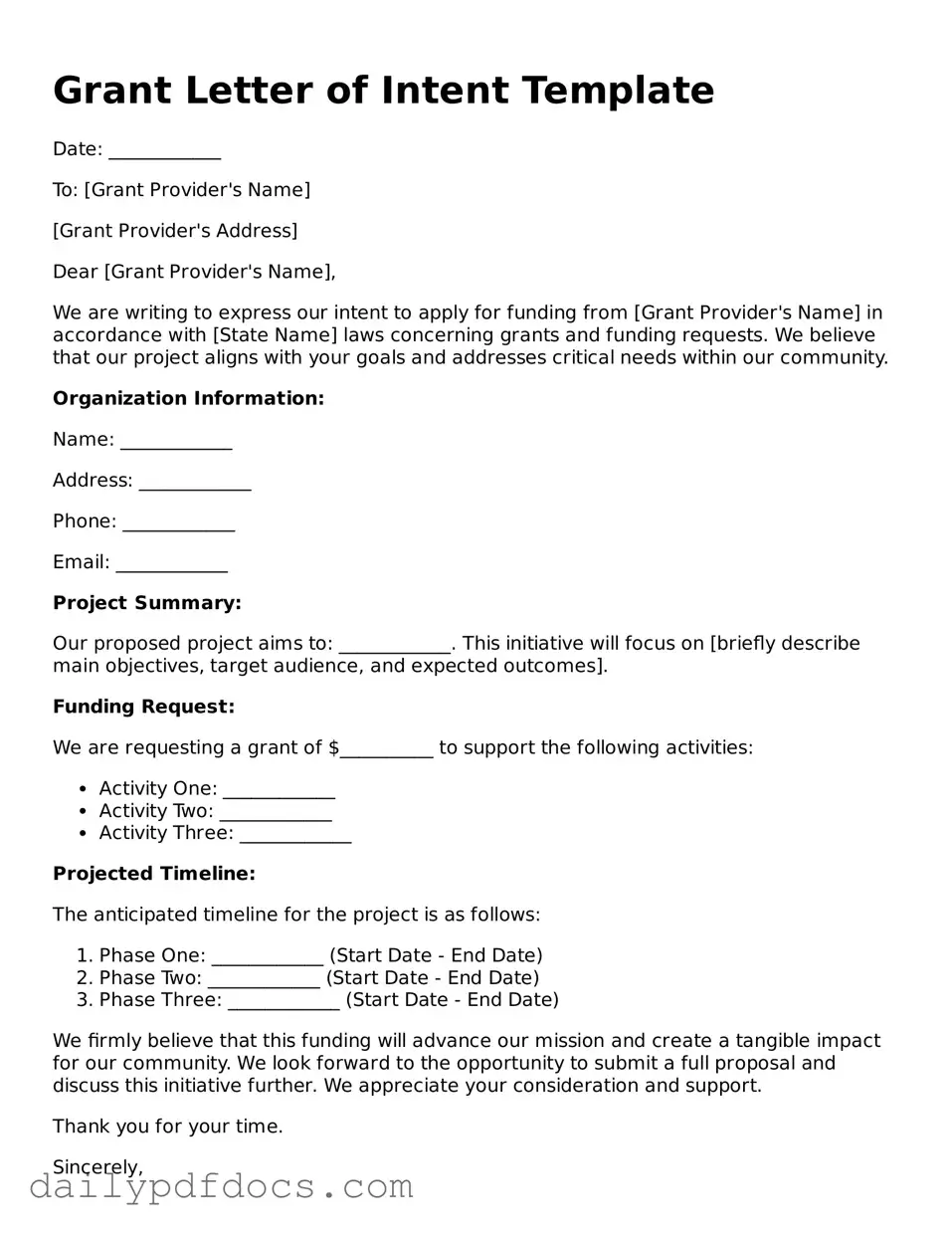Grant Letter of Intent Template
Date: ____________
To: [Grant Provider's Name]
[Grant Provider's Address]
Dear [Grant Provider's Name],
We are writing to express our intent to apply for funding from [Grant Provider's Name] in accordance with [State Name] laws concerning grants and funding requests. We believe that our project aligns with your goals and addresses critical needs within our community.
Organization Information:
Name: ____________
Address: ____________
Phone: ____________
Email: ____________
Project Summary:
Our proposed project aims to: ____________. This initiative will focus on [briefly describe main objectives, target audience, and expected outcomes].
Funding Request:
We are requesting a grant of $__________ to support the following activities:
- Activity One: ____________
- Activity Two: ____________
- Activity Three: ____________
Projected Timeline:
The anticipated timeline for the project is as follows:
- Phase One: ____________ (Start Date - End Date)
- Phase Two: ____________ (Start Date - End Date)
- Phase Three: ____________ (Start Date - End Date)
We firmly believe that this funding will advance our mission and create a tangible impact for our community. We look forward to the opportunity to submit a full proposal and discuss this initiative further. We appreciate your consideration and support.
Thank you for your time.
Sincerely,
[Your Name]
[Your Title]
[Organization Name]
